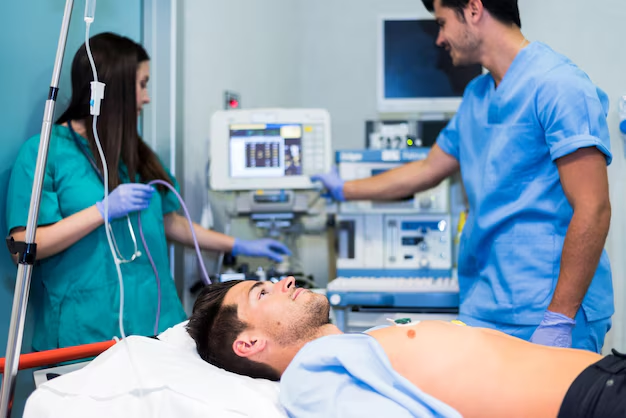Understanding Liver Disease: What You Need to Know
Liver disease often flies under the radar, largely because its symptoms can be subtle until significant damage occurs. Yet, it plays a vital role in our well-being. The liver is the body’s detox powerhouse, filtering out harmful substances from the blood. Understanding liver disease is crucial because it can affect anyone at any age. Read on to learn about liver disease, its causes, symptoms, and what steps you can take to maintain a healthy liver.
What Is Liver Disease?
Liver disease encompasses a wide range of conditions that impair liver function. Unlike the vibrant, busy organ capable of regenerating itself after injury, a liver compromised by disease struggles to perform essential tasks like producing bile for digestion, storing vitamins and iron, and converting nutrients from our diet into energy.
Common Types of Liver Disease
- Non-Alcoholic Fatty Liver Disease (NAFLD): A condition where excess fat builds up in the liver, often linked to obesity and unhealthy diet.
- Alcoholic Liver Disease: Damage caused by excessive alcohol consumption, potentially leading to cirrhosis.
- Hepatitis A, B, C: Viral infections that cause liver inflammation.
- Cirrhosis: Scarring of liver tissue that hinders liver function due to long-term damage.
- Liver Cancer: Often the result of chronic liver disease, primarily seen in those with cirrhosis.
Recognizing the Symptoms
Early symptoms of liver disease can be mild and easily mistaken for other common ailments. Here are some tell-tale signs:
- Fatigue: Feeling continuously tired or weak.
- Jaundice: Yellowing of the skin or eyes, indicating bilirubin buildup.
- Abdominal Pain and Swelling: Especially around the upper right abdomen where the liver resides.
- Dark Urine: Could be a sign of liver issues, as excess bilirubin can be excreted through the kidneys.
- Nausea or Vomiting: Digestive issues when the liver's detox function is impaired.
When symptoms become severe, complications can arise, including ascites (fluid accumulation in the abdomen), varices (enlargement of veins around the stomach and esophagus), and liver failure.
Causes and Risk Factors
Key Causes
- Excessive Alcohol Consumption: Known for its toxic effect on liver cells over time.
- Viral Infections: Such as hepatitis viruses.
- Obesity and Poor Diet: Often lead to fat buildup and oxidative stress on the liver.
- Genetic Factors: Like hemochromatosis or Wilson's disease.
Risk Factors
- Unhealthy Lifestyle Choices: Sedentary habits and a poor diet.
- High Cholesterol and Hypertension: Related to obesity and metabolic syndrome.
- Diabetes: Increases the risk of developing NAFLD.
- Exposure to Toxins: Such as industrial chemicals, illegal drugs, or certain medications.
Prevention and Lifestyle Choices
Maintain a Healthy Diet
- Eat a Balanced Diet: Focus on fruits, vegetables, whole grains, and lean proteins.
- Limit Intake of Saturated Fats and Sugars: Avoid excessive fast food and sugary drinks.
- Stay Hydrated: Adequate water intake helps maintain liver function.
Lifestyle Habits
- Regular Exercise: At least 150 minutes of moderate aerobic exercise weekly.
- Moderate Alcohol Consumption: Limiting alcohol intake can prevent liver damage.
- Vaccination: Hepatitis A and B vaccines offer protection against these viral infections.
Diagnosis and Monitoring
Diagnostic Tools
- Blood Tests: Check for liver enzyme levels, bilirubin, and proteins that indicate liver health.
- Ultrasound or CT Scans: Imaging techniques to visualize the liver's structure.
- Liver Biopsy: A more invasive procedure to examine liver tissue directly.
Monitoring and Follow-up
Regular check-ups with a healthcare provider can help catch liver disease early. Those with pre-existing conditions or risk factors like obesity or a history of alcohol use should discuss liver health with their doctor frequently.
Treatment Options
While treatment varies depending on the type and stage of liver disease, several common approaches include:
- Lifestyle Changes: Diet, exercise, and alcohol avoidance.
- Medications: To manage symptoms or address underlying causes like hepatitis.
- Surgical Interventions: In severe cases, such as liver transplantation or treatment for liver cancer.
The Road Ahead: Living with Liver Disease
Living with liver disease requires comprehensive management and lifestyle adjustment. Symptoms can be controlled, and progression can be slowed with appropriate treatment and lifestyle changes. A support system involving healthcare providers, family, and community can be invaluable.
Self-care Tips
- Monitor Symptoms: Keep track of changes and communicate with your healthcare provider.
- Stay Informed: Understand your condition to make informed decisions about your health.
- Join Support Groups: Share experiences and learn from others in similar situations.
Emphasizing liver health is an essential component of overall wellness. Taking proactive steps, like maintaining a healthy diet and regular check-ups, can greatly reduce the risk of liver disease. Understanding and managing this vital organ’s health is invaluable in ensuring a vibrant, energetic life.
📝 Quick Summary: Liver Disease Essentials
- Understand Symptoms: Fatigue, jaundice, abdominal pain.
- Know the Causes: Alcohol, obesity, viral infections.
- Healthy Lifestyle: Balanced diet, regular exercise, moderate alcohol intake.
- Regular Check-Ups: Essential for early detection and management.
- Proactive Management: Lifestyle changes, medications for underlying causes.
- Build a Support Network: Stay informed and connected with others.
By learning to recognize the signs and consider the risk factors, you can reduce the impact of liver disease before it affects your quality of life. Remember, taking care of your liver is an investment in your long-term health. 🍏💪

Related Articles
- Can Fatty Liver Disease Be Reversed
- Can Liver Disease Be Cured
- Can You Get Liver Disease At 30
- How Can I Cure Fatty Liver Disease
- How Do I Cure Fatty Liver Disease
- How Long Can You Live With Graves' Disease
- How Long Can You Live With Kidney Disease
- How To Cure Fatty Liver Disease
- How To Get Rid Of Fatty Liver Disease
- How To Reverse Fatty Liver Disease